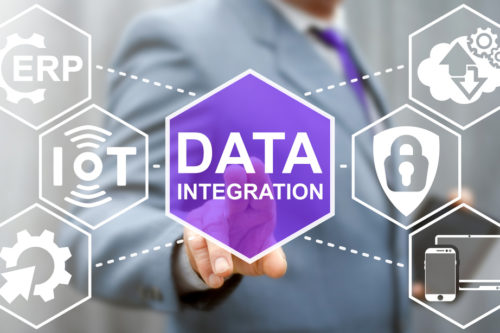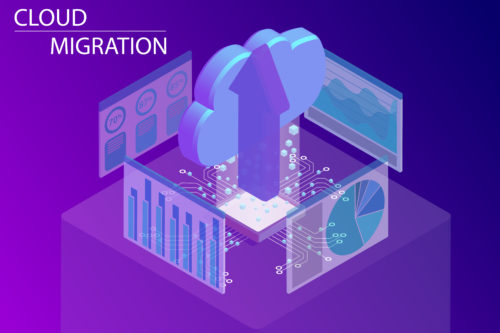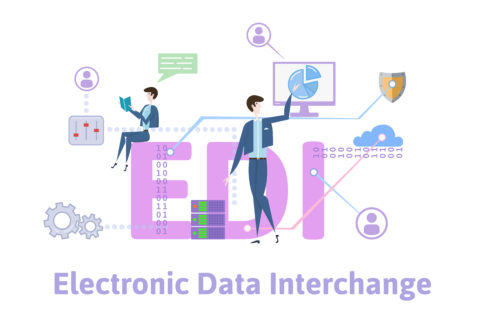In March 2020, oil prices registered a steep decline settling at ~$20 per barrel from ~$70 per barrel. Although a significant reason behind the decline was low demand because of the COVID-19 crisis,
Oil price deflation is just one example of poor business intelligence. There are many more similar cases where businesses could have predicted an action but were not able to do so because of a lack of refined data, causing them millions in losses.
Every year companies create thousands of terabytes of data, but this data remains in silos, waiting to be discarded or rewritten. Despite this fact, almost 40% of companies still don’t have a proper data management solution in place to extract useful business insights. Meanwhile, those companies that do have a suitable data management solution are not using it to its full extent, leading to leaking buckets of opportunity.
The only solution available is that businesses create a sound enterprise data migration strategy that can help them turn their raw data into valuable intelligence.
What is Data Migration?
Data migration is the process of migrating data from one location to the other and from one format to the other without compromising on quality.
The data migration process can be between on-premise systems, from on-premise to cloud, or cloud-to-cloud. Each requires a different set of tools.
- On-premise tools. Used for migrating data from a legacy system to a modern one or from a legacy to an open-source system Most on-premise tools offer advanced ETL functionality to organize, cleanse, refine, and transform data before migration.
- Open Source tools. Include community-supported tools, usually freemium with customizations. They can have different features depending on their requirements. However, most are not scalable and often lack consistent support.
- Cloud-based tools. Used for on-site to cloud, or cloud to cloud data migrations. Since this software is not available on-premise, they can have fewer features in comparison with on-premise tools, slow processing speed. They can face scalability issues when migrating data in bulk.
Enterprise Data Migration Pain Points
Migrating data can be challenging, especially when it is unstructured and raw and spreads across distributed systems. Here are a few challenges that enterprises face when migrating data.
- Data loss
Data loss can occur because of many reasons, intentional and unintentional. For example, connection failure, abrupt termination of migration, bugs in migration software, incompatible , and similar others. These can lead to substantial data loss that is impossible to recover. The workaround is to have a backup of all data before starting the migration process.
- Compatibility issues
Compatibility is another major challenge when it comes to data extraction. Raw data in file formats can’t be migrated to databases without applying transformations and structuring it to the right schema before the target system can use it.
- Poorly Managed Execution
Most companies assign the task of data migration to their IT departments. Although this is a decent approach if the data marts are few or if the data is only a few terabytes. But when this data is in assigning the IT team for managing data is not the right strategy. Data migration is a risky business, and it is always better to have experts on board before migrating bigger data chunks.
Requirements for Successful Data Migration Strategy
Where successful data migration can help a business prosper, an unsuccessful data migration plan can wreak havoc in an organization. Problems such as lack of data integrity, corrupted data, and inefficient processes can directly impact the business. Therefore, it is essential that the organization factor-in elements that can hinder the successful execution of its data migration plan. A few things to consider in the data migration plan are:
- Budget
Creating a budget plan for your data migration needs is a severe task. According to Gartner, almost 80% of data migration projects go over budget. You must create a proper budgeting strategy and follow it for the successful execution of your data migration project.
- Understanding End-User
The end-users of a data migration process are mostly C-level executives, shareholders, investors, and board of directors. All these need a holistic view of how the organization is performing. Data migration teams need to understand what tools they use, what ways they access data, and in what format. This will help the teams create a proper data migration project plan.
- Backups
If a disaster comes knocking, backups will ensure that your organization’s data is always protected even during the migration process. Even if some problem occurs during migration, you can always roll back and start all over again.
- Validate
Once the data is moved successfully to the new systems, it is time to validate it. This would include checking if all data was moved successfully and that no discrepancies are present. In today’s marketplace, automated validation software such as Astera Centerprise offer data quality checking options for data migrations. This software can validate your data in realtime and notify you in case of discrepancies.
- Test & Go Live
Once you have the data successfully moved to the new system, it is time to test it. Tests will ensure that your data is free from errors and for further operations such as business intelligence, use in another product/medium, or for data governance.
Features You Need in Enterprise Data Migration Tools
Let’s find out what features you need to have for your enterprise data migration needs.
- Code Free (GUI)
Gone are the days when you had to extract and migrate data using SQL commands. Now you can do all that with the help of a code-free, graphical user interface (GUI) software. It ensures that non-technical users can also run the software and get their jobs done.
- ETL
The purpose of data migration is to move the data from one format to the other for extracting business insights. It isn’t just ingesting data at a single place. Therefore, make sure to check that the software you choose offers Extract, Transform, Load (ETL) functionality.
- Location
Is the software available in cloud, or is it an on-premise software? Enterprises with millions of data points require on-premise software because it is reliable, faster, and scalable. However, companies with units in different parts of the world choose cloud-based data migration software.
- Cost
Depending on the features offered in a data migration software, the price can vary from $1,000 to $50,000. You need to consult the data migration software support team to get a custom package based on your data migration requirements.
- Security
Data integrity is imperative for any business. Modern data migration software ensures the complete security of enterprise data. They offer token-based user authentication, secure domain communication, and role-based access controls to restrict third-party connection to company data.
Best Data Migration Tools for Enterprises
We decided to save you the pain of finding a decent data migration tool for your business. Based on the features we mentioned above, here is a list of the best ones.
An end-to-end on-premise data integration, migration, and transformation tool that lets users move any type of data from source to destination or from a single format to the other. It also offers transformations so that users can filter, merge, separate, and apply functions to the data during the transformation process. Centerprise is a high-availability, mid-budget, data integration software perfect for organizations with multiple business units, or numerous subsidiaries that require data migration either in realtime or in batches.
- IBM Infosphere
IBM Infosphere is a data migration tool that lets organizations move data from data marts or data silos to a single or multiple data storage locations. Just like Centerprise, IBM Infosphere offers features like end-to-end ETL, data quality and data governance checks. It is available as an on-premise and a cloud data integration tool.
- Informatica PowerCenter
Informatica PowerCenter is a great enterprise-level data migration tool that’s mostly used for building enterprise data warehouses. It also offers complete ETL functionality while ensuring data quality and data governance. It is an on-premise data migration tool that can be used for both homogeneous and heterogeneous data migrations.
Ready to Create Your Data Migration Project Plan?
Any growing enterprise must undertake continuous data migrations as part of their operations. These transfers require consistency, security, and efficient monitoring and management – so, make sure that you are armed with the right ETL tools to get that job done.
The software mentioned above can help you kickstart your data migration project by streamlining everything from data preparation, to extraction, to ingestion, to transformation, and finally, migration to the new system.
Want to know more about how to start your data migration process? Contact here.







